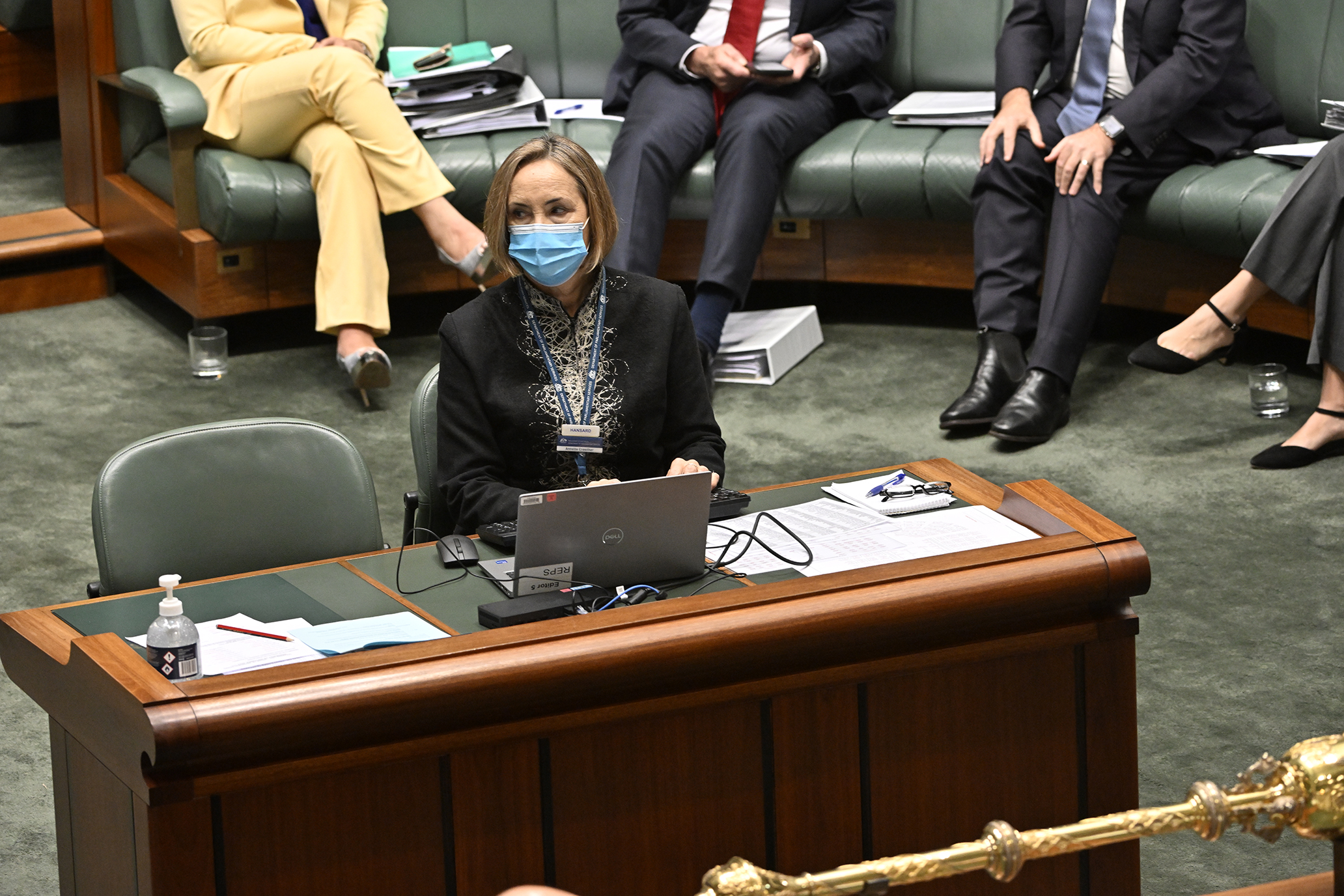Hansard
The official written record of what is said in the Australian Parliament is called Hansard. This fact sheet explores the role of Hansard, why and how it is produced and its history.
What will I learn?
- Hansard is the official written record of what is said in the Australian Parliament.
- Hansard is available online, making the work of Parliament transparent to the public.
What is Hansard?
Hansard in the House of Representatives

Penny Bradfield/DPS Auspic
Description
A Hansard editor in the House of Representatives. They sit at a small table in the centre of the room where they record everything that is said.
Copyright information
Permission should be sought from DPS AUSPIC for third-party or commercial uses of this image. To contact DPS AUSPIC email: auspic@aph.gov.au or phone: 02 6277 3342.
Hansard is an edited transcript – written record – of what is said in the Australian Parliament. In Australia, public scrutiny – close examination – of the Parliament is an important part of our democracy. As well as informing people about parliamentary business, Hansard helps keep Parliament accessible and accountable.
Hansard records what is said in the Senate, the House of Representatives, the Federation Chamber and committee hearings—both when committees meet at Parliament House and when visiting communities across Australia. It also includes the results of divisions, the text of petitions, and ministers' written statements and their answers to questions. Hansard also takes note of actions that happen in Parliament such as interruptions, a member leaving the room and the use of a prop. Hansard also produces transcripts of special events such as lectures, speeches and press conferences.
Hansard has a team of more than 50 Hansard editors. In the Senate and the House, Hansard editors sit at a small table in the centre of the room.
Creating Hansard
The audio of everything that is said in the Australian Parliament is recorded. In the Hansard office, editors transcribe 5-minute blocks of recorded audio—called a ‘turn’—with the help of software. The editors will then include any actions they noted while in the meeting.
A Hansard editor in the Senate

David Foote/DPS Auspic
Description
A Hansard editor sits at a small desk in the middle of the Senate and works on a laptop. Hansard editors ensure that everything that is said in the Senate and House of Representatives is recorded.
Copyright information
Permission should be sought from DPS AUSPIC for third-party or commercial uses of this image. To contact DPS AUSPIC email: auspic@aph.gov.au or phone: 02 6277 3342.
A Hansard editor usually takes 30 to 45 minutes to edit a turn. Editors check for correct spelling, grammar and punctuation, and edit out mistakes and vocal tics like ‘um’ and ‘ah’. They use reference and style guides to ensure consistency between editors. Although Hansard can be changed slightly from an exact account of what was said, the meaning of the speech cannot be changed.
When all turns for a day are complete, the proof – draft – Hansard is uploaded to the Australian Parliament House website. The proof is available within 3 hours of the Parliament finishing for the day.
Members of parliament can suggest corrections to the proof. These are mainly about facts such as the names of people, organisations and places, historical facts, and Aboriginal and Torres Strait Islander words. Members are not permitted to rewrite or alter the meaning, or to improve the official record, as it must remain an accurate reflection of what was actually said.
Once the proof has been checked and changed, it is uploaded to the Australian Parliament House website and becomes the official Hansard. These are available around 2 weeks after each sitting week and replaces the proof.
History
Hansard is named after the family of printers and publishers who produced the record of British parliamentary debates from 1812 to 1889. Up until the late 18th century, it was illegal to report what was said in either the House of Commons or the House of Lords, although a record of the decisions made by the British Parliament was available to the public. It was thought that parliamentary debates should be kept private so members of parliament would not be influenced by the opinions of their constituents.
Hansard has reported the debates and divisions of the Australian Parliament since Federation. These have all been digitised and are publicly available on the Australian Parliament House website.